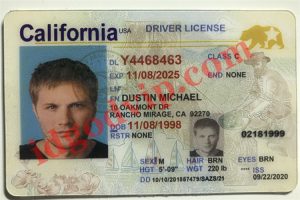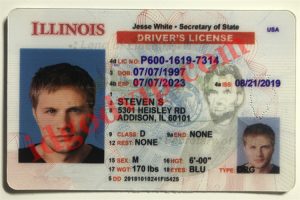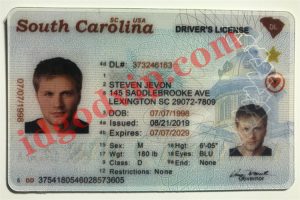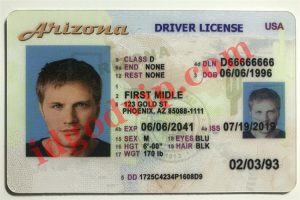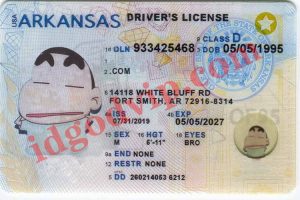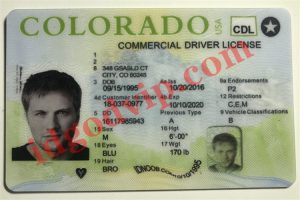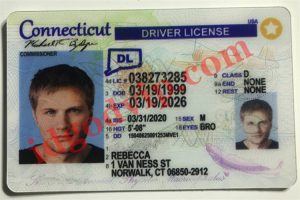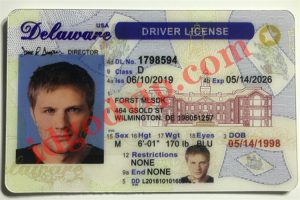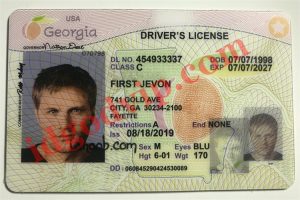How to Use or Spot a fake ID
Getting a quality fake ID, and not one that screams fake from a mile away, is the first and most important step on your journey to drinking paradise. The second is knowing how to actually use one.
big part of the college experience and essentially the growing up experience involves exploring the hottest clubs in town and throwing outrageous parties, both of which involve copious amounts of booze.
Now, if you are a freshman unlucky so far in the age department, these nights of craziness and fun will be off-limits to you unless your fairy godmother, the fake ID, bibbidi bobbidis you into an adult. Like Prometheus brought fire to mankind, the fake ID comes as a true savior for hapless souls destined to spend the night far away from all the festivities.
How to Get In With Confidence
It isn’t just that; a fake ID is your pass to everything that makes life enjoyable – happy hour at the local bar, the pop concert you have been waiting for, or the summer break you have been planning.
Getting a quality fake ID, and not one that screams fake from a mile away, is the first and most important step on your journey to drinking paradise. The second is knowing how to actually use one.
We will equip you with everything you need to know about fake IDs, the important elements that make up an ID, and what bouncers actually look for when they are engaged in a staring contest with your ID. Armed with this knowledge, you won’t end up getting scammed with a sub-par fake.
Once that’s done, we will walk you through some essential tips of using a fake ID so you don’t get caught on your first rodeo. We know a good fake ID can be considerably heavy on the pocket if you are a student, and the last thing you would want is for it to be confiscated. But first let us give you a little background about why you are even in this mess.
How Did It Get to This?
Fake IDs have been the staple of college students countrywide for the past many decades, but it wasn’t always like this. In fact, there was a time when the fake ID business was not booming at all. To be fair, picture IDs weren’t a thing back then either. The first driving licenses did not have any picture or date of birth on them.
Instances of people using fake IDs before the 1980s are few and far between. The reason for that is simple – drinking laws weren’t in place and seeing that drinking is the primary reason the average American teenager buys a fake, people didn’t need to. Cases like Kurtis Blow’s use of a fake ID to advance his career were a rarity back then.
Many of you reading this might not know who Kurtis Blow is, but if you ask a boomer, they might. He is a currently active rapper and pop star who was all the rage back in the 70s. Early in his career when he was only 13, he was using a fake ID to get into the hottest clubs in NYC, performing solos and building a network of DJs and industry influencers. His struggle paid off to make him one of the first rappers with a gold-selling single, to have toured overseas and to have been signed by a major label all before the age of 22.
Although Kurtis was using a fake ID to fake his age in much the same way teenagers are doing today, the difference is that his fake ID listed his age as 19. The drinking age at the time all over the US was 18 years. Oh, what a time it was to be in for today’s party-heads!
All this changed in 1984. Much like the film Django (the original one, not Unchained) redefined the Western film genre, one law redefined what it meant to be a teenager in North America. This was the year that the popular nonprofit, Mothers Against Drunk Driving, partnered with Frank Lautenberg, the senator for New Jersey, to push the National Minimum Drinking Age Act.
This was a clever bill in the way that it ensured nation-wide compliance. According to it, states weren’t required by the constitution to have a drinking age lower than 21 and those that did would lose 10% of highway funding. No state wanted that, so the new drinking age became the reality for thousands of teenagers across the nation and millions more to this day.
So, it came to pass that adults who could legally vote and go off to fight the country’s wars could no longer buy a pack of beers. This was the time that the fake ID market found its place in American society to become a thriving business.
Elements of a Fake ID
Ever since the fake ID market went crazy, states have continually been throwing things in their IDs to make them more and more difficult to copy. It makes sense; the crazier something is, the more difficult it is to copy.
Despite all the craziness going on in an ID (what with the pictures, diagrams, random shapes and who knows what else), there are three major components of any ID, real or fake. The accuracy with which these components are copied would mean the difference between you having a fun night out with friends or being led out in handcuffs.
Those three components are a barcode, holograms, and raised text. We will discuss each one in a bit more detail.
1. Barcode
This is an integral component of any ID card. It is a scannable code on a real ID that holds key data about the person it is issued to. A barcode is meant to be an additional layer of verification on IDs in case the ID has been manipulated. A good fake ID, which is the only one you should be buying if you wish to stay out of trouble, is made with a barcode that can be scanned just like the real thing.
2. Holograms
There could be one or more of these on an ID. The hologram is an encoded component that is placed on the ID with a particular type of laser. Much like the barcode, it is an additional layer for verifying the ID’s authenticity.
Since it requires specialized equipment and the design and placement are considerably difficult to copy for an amateur, not all fake IDs manage to nail this bit. A fake ID that does not do this right will be spotted by the seasoned doorman in a second. It’s more than just your fun night out that could be put in danger.
3. Raised Text
Specialized embossed texts are fairly standard in most IDs and the simplest way of telling a real from a fake. However, this is also one component of the ID that is easiest to copy. Machines that can emboss texts are easy to acquire, so even if a fake ID nails nothing else, the chances are that it will manage to get this right. Unless, of course, it is made by a 12-year-old in their mother’s attic.
A good fake ID will recreate all these essential components to match the original as best as it can. These additional layers of verification must be laid down with only the best equipment and instilled with the same functionality for them to have a chance at being passed off as originals.
How Are Fake IDs Spotted?
Each state has its own design for its IDs and a bunch of verification features thrown in. Bouncers will be very familiar with their state ID’s verification features like the size and placement of holograms, designs in the background and other identifying markers.
How a seasoned doorman will spot a fake ID is through experience, but experience comes with time. Until such a time comes, bouncers employ a number of techniques, usually focusing on one or two components of the ID, to verify their authenticity. Some of the ways they may check your ID card are as follows:
IDSCAN SECURITY
- Most real IDs will have a microprint on them. With the naked eye, this may look just like a straight line, but hold the ID up under a 10x magnifying glass and it will reveal text that can be used to verify the ID’s authenticity.
- IDs also contain images or texts that are only revealed under UV light. Doormen or other individuals checking IDs often have a blacklight they will shine on IDs to check for these hidden components.
- The barcode that we mentioned in the previous section may also be scanned to check if the ID is genuine.
- Tilting the card under some light will also reveal holograms that all state IDs now have. These often include the state’s symbol or name.
- One of the easiest ways of checking an ID is by feeling it with your hands. Although bouncers outside a busy nightclub won’t do this due to lack of time, you can see liquor store owners often checking IDs this way. Running your fingers on the ID will reveal features like embossed writing and other laser engravings. Some fake IDs presented may also have a picture pasted on the original, and running a finger over it will let the person checking feel the inconsistency.
In addition to the ID’s physical attributes, the person handing it over can also give away if it is fake. Doormen or store owners will observe you for any cues that may reveal the ID’s lack of authenticity.
What to Do When Handing Over Your Fake ID?
Another way to spot a fake ID, as we mentioned above, is through observation. Doormen and store owners will intentionally stare at you to get you out of your comfort zone so that you slip up. They are trying to see if you are nervous or shaky because many first-time users often are.
The key here is confidence. If you have never used a fake ID before, the first few times are crucial because you will naturally be nervous and doormen are good at picking up on these cues. Before you approach the person checking the IDs, breathe and make sure you’re not perspiring too heavily before handing that ID over.
The more you think about it, the more nervous you will be, so don’t think about it. Instead, think of it as a regular university ID that you have handed over countless times without fear of getting caught. Think back to a time when you handed over one of your real IDs and try to get yourself in a similar state of mind.
It goes without saying that before you hand the ID over, you should have memorized all the information on it. Practice for a few days so the information becomes second nature. A moment’s hesitance once you have handed the ID over can give away the whole game.
Additionally, it is a good idea to look up the area the fake ID says you are from. Check maps for important landmarks, schools and places you would have visited had you really lived there. Doing this is important so that you are prepared in case, by a turn of fate, your ID is being checked by someone who is from the same area.
What Happens If You’re Caught?
If you are caught and the bar decides to call the police, you may be charged for anything from a misdemeanor to a felony, depending on the state you are in. Each state has a law for underage drinking. For information on more; you can browse our SHOP page to review each stance of every state regarding this. However, this is a worst-case scenario that seldom happens. In fact, some police departments do not even respond to calls about teenagers using fake IDs.
Most bars will either confiscate the ID or refuse service. If a bouncer confiscates your ID, know when you have lost and do not argue. If you really want that ID back so that you can try somewhere else, come back at a later time so that the bouncer has had a chance to cool down and then try your luck.
